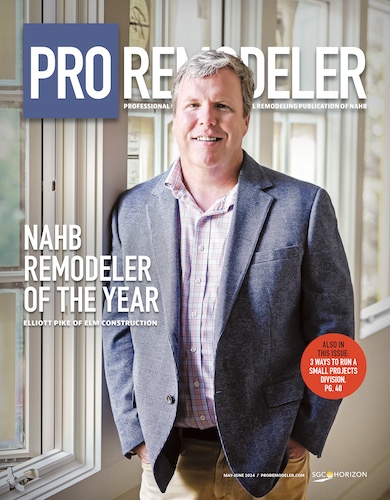I know it’s not kind, but in the past, if anyone told me that they had multiple chemical sensitivity (MCS), I would secretly roll my eyes a little. I knew the person’s suffering was real, and that everyone’s body is different. But I also knew that the diagnosis is controversial, and that many believe MCS to be a mental health issue rather than a physical problem.
Broadly defined, MCS is an unusually severe reaction to common chemicals and pollutants often found inside the home. I’ve spoken with remodelers who frequently work with chemically sensitive clients. These homeowners aren’t always easy, and their projects require a deeper than usual understanding of pollutants when selecting products and materials.
Anyway, when it came to MCS, I lived in a sympathetic, yet skeptical, bubble until a version of it happened to me. My problem was easy to figure out, and straightforward to fix, yet it changed my thinking. (See story on page 52.) The insulation in the roof of my office had been compromised by ants, and something in there had started making me sick. But here’s the thing: Whatever was causing problems for me didn’t bother anyone else who entered that room. I felt like I was going crazy.
After the issue was fixed, I called up Michael Anschel to see if he had any insight. Anschel is a principal with Otogawa-Anschel Design+Build in Minneapolis. He’s a big building science and sustainability guy, and I thought he might know something about why my body had reacted so strongly to a product that’s chemically inert. He not only provided a plausible theory, but he weighed in on chemical sensitivity in general.
“Depending on people’s exposure to materials in their life, they can have more or less sensitivity to what’s in their environment,” he said. “If you pump your own gas, have carpet and buy furniture from big-box stores, then adding one more element might overload the system. Chemical sensitivity is a real thing.”
Anschel went on to tell me about a couple whose entire house he recently remodeled because their young daughter was having a severe reaction to some of the products that were in the home. After the work was done, her symptoms vanished.
While there are many design-build firms that know how to talk to homeowners about environmental toxicity, there are also many that don’t. Even if you serve a region or demographic that doesn’t fit the clichéd image of a person with chemical sensitivity, it’s still important to understand the problem and know which steps to take to address it.
Chemical sensitivity is a complex topic. Remodelers such as Anschel who bring information and authority to the table will win more jobs and create happy clients.
Related Stories
Pro's Picks: An Affordable, Reactive Project Management Tool
This pro recommends an automated scheduling system that works for teams of all sizes
An AI-Powered Collaboration Platform for Construction
Digs promises to eliminate client and team frustrations through enhanced communication
Pro's Picks: A Real-Time Project Communication and Management Tool
This remodeler says this product allows for easy, quick, real-time communication with team members in the field and in the office
This New Tech Turns Any Countertop into a Wireless Charger
FreePower for Countertop has swept awards for its innovation—and the company claims installing it is "as straightforward as cutting a sink"
Pro's Picks: A Quick Install Composite Stone
This pro completed a high volume facelift project months ahead of schedule
Pella's New Debut Promises Faster, One-Person Window Installs
The window manufacturer promises 3.15x faster installation with its Steady Set system
Marvin Releases Switchable Privacy Glass Window
The privacy glass windows can be purchased from Marvin's Direct Glaze windows
Innovative Products: Window Shades That Create Natural Light
Wait, shouldn't window shades keep light out?
New Insulation Innovation Reshapes Our Thinking of Refrigeration
Whirlpool Corporation's latest innovation allows refrigerators to do more and be more












